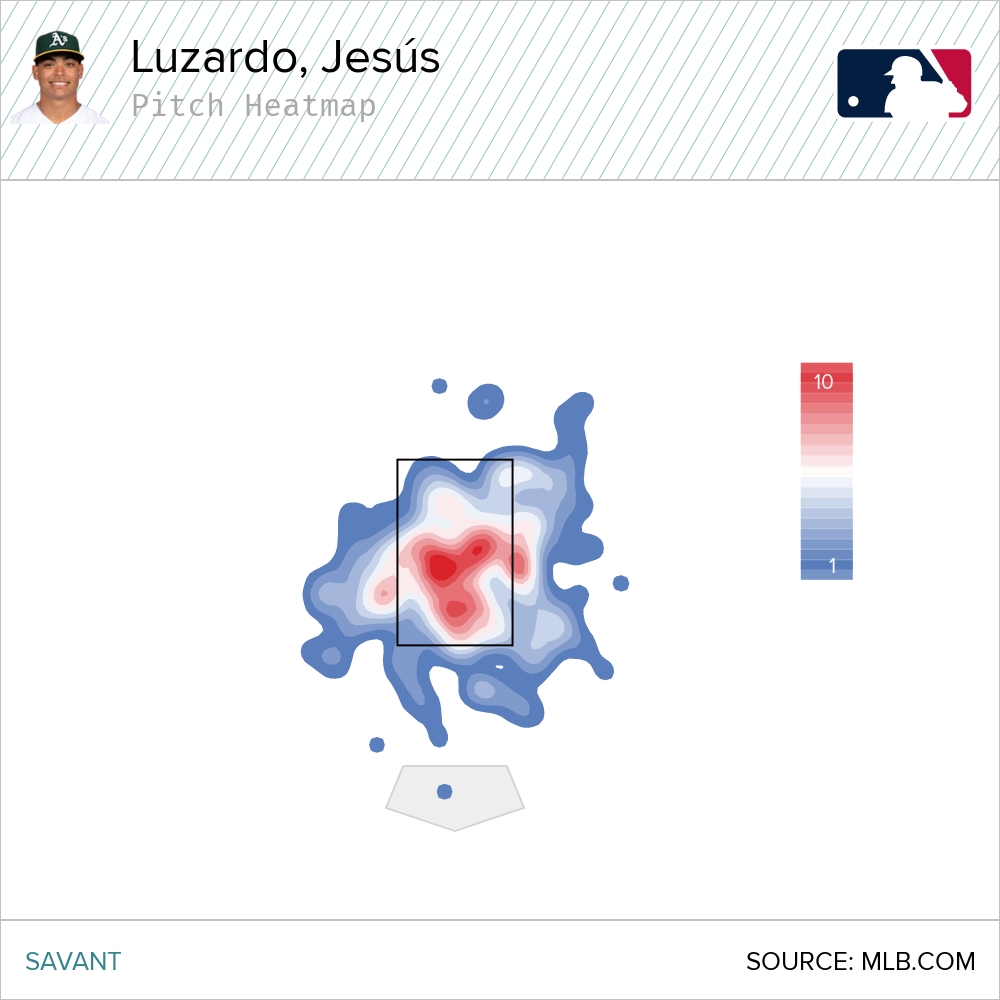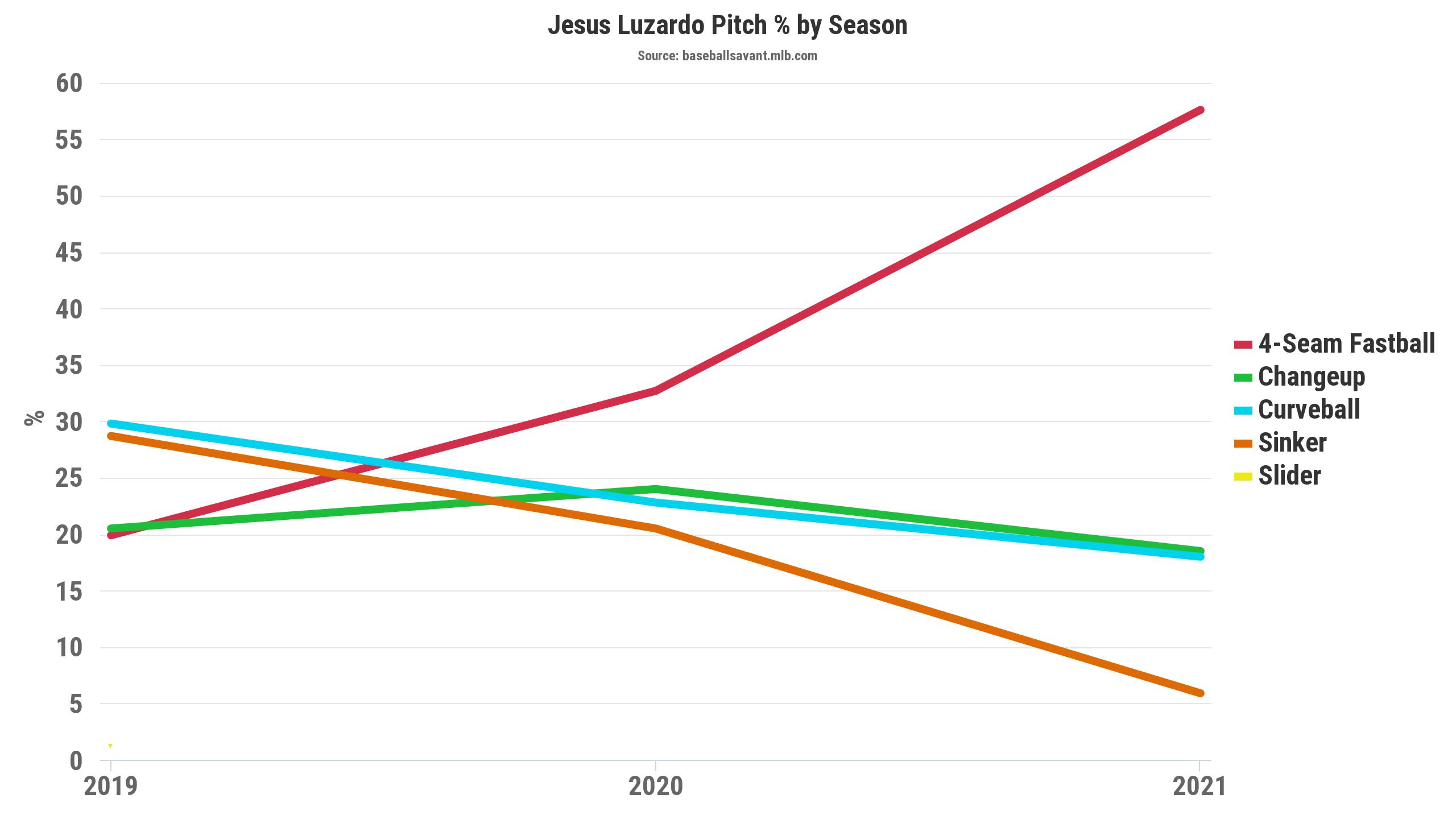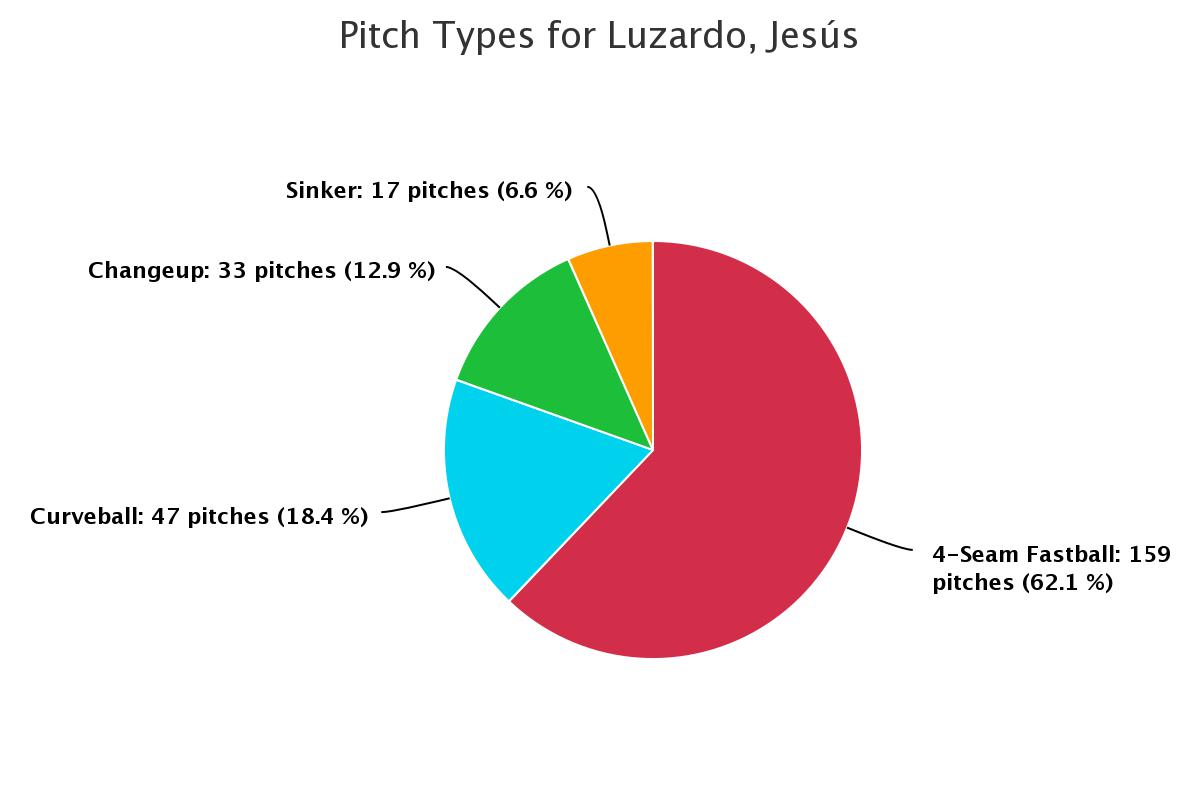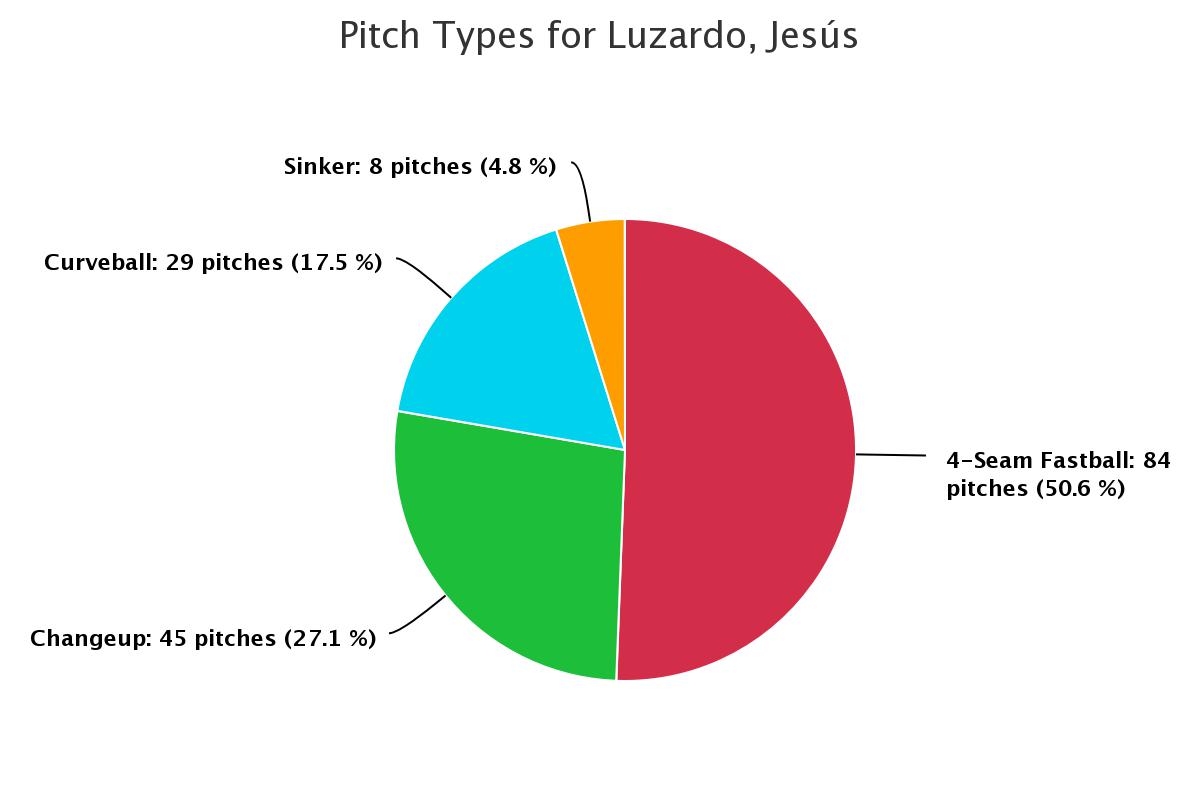Jesús Luzardo’s start to 2021 has been his career in a nutshell. There have been moments where opposing hitters have had their way with the young lefty and other moments where hitters look downright clueless.
The 2020 season wasn’t much different for Luzardo. The A’s assumed ace of the future finished the year with 4.12 ERA, which was inflated by a random relief appearance to end the year in which he allowed three runs in three innings. That’s an encouraging spot to be for a 22-year-old rookie pitcher but there were still some question marks in his profile heading into 2021. We’ll take a look at those later on.
The Player
Luzardo was selected by the Washington Nationals in the third round of the 2016 draft. Before the draft, Luzardo was considered a first-round talent but Tommy John surgery that spring led to him falling down draft boards. As a result, we didn’t see Luzardo on the bump until mid-2017. He fired 13.2 innings of work in Rookie Ball action before being traded to Oakland in a trade that netted Washington Sean Doolittle. Luzardo was electric at the Rookie level and Low-A to close out 2017.
The hype started to build around Luzardo following his performances in 2017. In 2018, he became one of the most well-known pitching prospects in the sport. In 109.1 innings across High-A, Double-A, and Triple-A, Luzardo fanned 129 hitters and posted a 2.88 ERA. It was clear the minors weren’t challenging him and he would be in the majors in no time. An injury-plagued 2019 slowed down Luzardo’s season, but he did make it to the bigs and tossed 12 innings as a reliever, allowing just two earned runs.
Heading into 2020, a few questions arose surrounding the left-hander. Could his arm handle a starter’s workload? If so, could he handle it for a full season? Would he have to split time as a reliever and a starter?
2020
In some ways, the shortened 2020 was a good thing for Luzardo. As previously noted, there were concerns that the pitcher wouldn’t be able to handle a full workload as a starter – at least not for an entire season. The A’s were still careful with Luzardo – his first two outings only went a planned three innings – but a 60-game season allowed Oakland to be less concerned with full-season wear and tear on the young arm. The chart below outlines Luzardo’s results.
| Player/Stats | IP | ERA | FIP | xFIP | K% | BB% |
| Jesus Luzardo | 59 | 4.12 | 4.19 | 3.88 | 23.8 | 6.9% |
Those are some pretty solid numbers for a 22-year-old rookie. The strikeout numbers were a bit lower than we were used to seeing from Luzardo in the minors, but the rate still ranked in the top-40 for pitchers that threw at least 50 innings. The walk rate was a touch higher than his minor league average but put him right around the top-30. Most encouragingly is that in his final 25.1 innings – which included a three-inning relief appearance where he struggled – Luzardo’s walk rate was 3.7%. That number shouldn’t be the expected rate for Luzardo going forward, but it was a notable improvement he made throughout the season.
Luzardo featured a four-pitch mix in 2020: a four-seamer, a curve, a sinker, and a change. The curve could actually be classified as a slider, depending on who you ask, but Baseball Savant categorizes it as a curveball so we will do the same for the purpose of this article. Let’s take a look at some of the results for these pitches last season.
| Pitch/Stat | Usage Rate | BA | xBA | WOBA | xWOBA | Whiff Rate |
| Four-Seam | 32.7 | .215 | .262 | .331 | .355 | 19.8 |
| Sinker | 20.5 | .279 | .312 | .352 | .372 | 9.0 |
| Curveball | 22.8 | .250 | .232 | .246 | .216 | 45.7 |
| Changeup | 24.0 | .286 | .177 | .247 | .277 | 44.1 |
This is one of the more balanced pitch distributions you’re likely to come across. That being said, that isn’t necessarily a good thing. While his curveball and sinker were brilliant, Luzardo’s four-seamer and sinker both got beat up in 2020 and he was throwing the latter offerings close to a combined 60% of the time. Moreso, he was not generating whiffs with these pitches, especially the sinker. A look below gives us a glimpse as to why that may be the case.

Luzardo Sinker 2020
That’s a lot of pitches middle-middle. Generally speaking, throwing pitches over the heart of the plate is not going to lead to much success. It makes sense why this pitch was getting pounded and why it wasn’t generating swings and misses. His four-seamer, however, was located much higher in the zone even if that too was catching too much of the plate too often. As the previous stats indicated, it did perform better than his sinker but was still a below-average offering. At the very least, it did induce whiffs at a much higher rate than his sinker.
So overall, it was a decent rookie campaign for the lefty, but his two fastballs were getting hit around and being thrown too often. Some changes would have to be made in 2021 to unlock Luzardo as an ace.
2021
It’s been an inconsistent start for Luzardo to begin the 2021 season. Through five starts, the now 23-year-old has posted a 5.40 ERA while striking out 29 in 25 innings. He’s seen a slight bump in his strikeout rate (up from 23.8% to 26.1%) but also an increase in his walk rate (up to 9% from 6.9%). We noted above that his two fastballs, especially his sinker, were causing issues in 2020. A look at Luzardo’s pitch mix shows that the lefty is trying to move away from his sinker.

Luzardo is all but abandoning his sinker in 2021. So far, he’s only throwing it 5.9% of the time. This is a good thing knowing what we know about his sinker. As a result of ditching his sinker, he’s utilizing his four-seamer at a much higher rate. Combined, he’s throwing the two more than 60% of the time now. Even though we know that the four-seamer is better than the sinker, it seems that it would be better for Luzardo if he started throwing his changeup and curveball more often. The four-seamer has been hit around to start the year to the tune of a .374 wOBA. He’s one of only three starters that rank in the top-24 of four-seamer usage that has a positive run-value (as in allows more runs) with this pitch. His 57.2% usage of the four-seamer is the seventh-highest amongst starting pitchers. Meanwhile, his curveball has a 56.8% Whiff rate, which is best among all starting pitchers. It’s great that he’s ditching the sinker but he needs to use the four-seamer less and his secondary pitches more.
Luzardo has thrown better his last two outings, though. In his first three outings, the lefty allowed 12 earned runs in 13 innings. He did fan 15, but he walked seven and had an xWOBA of .348. In his two more recent starts? He’s allowed three runs while striking out 14 and walking just three in 12 innings. His xWOBA was .278. A look at the charts below shows that he has featured his fastballs less and his secondary offerings more in his two more recent starts.

Luzardo First Three Starts

Luzardo Last Two Starts
It’s a very small sample, but it’s encouraging nonetheless to see the pitch mix head in this direction, even if the curveball should still be utilized more. If the mix continues to trend this way, I would expect Luzardo’s performances to continue to get better as well. There is one other key difference between Luzardo’s first three starts and his second two: Luzardo went back to wearing glasses. The lefty experimented with using contacts in his first three starts. Apparently, he didn’t feel comfortable in them and switched back to his signature goggles look. He told the San Francisco Chronicle that he’s feeling back to himself in the glasses. We love to dissect numbers, and they can tell us a lot, but a player’s comfort level, especially a pitcher’s, can make a huge difference. It’ll be interesting to see if Luzardo continues to perform well following this switch.
Conclusion
Luzardo came into 2021 following a solid rookie campaign in 2020. That, combined with the years of hype he received while climbing through the minor league ranks, made him a trendy breakout pick coming into the season. Hitters had their way with his two fastballs but especially with his sinker.
Luzardo has all but ditched his sinker in 2021 but struggled in his first three starts of the year. He was still throwing his four-seamer too often and allowed five earned runs in two of the three outings. He’s been better in his last two starts, posting a 23.9% K-BB rate. He’s been throwing his fastball less and his secondary offerings more and the results have started to surface. It is a small sample and he’s still throwing the fastball too much, but the pitch mix has started to head in a better direction.
If Luzardo continues to throw his fastball this often, it’s going to be tough for him to take the leap into the upper echelon of pitchers. The pitch simply gets hit too hard to be throwing it as often as he does. The good news for Luzardo is that his changeup and curveball have both been super effective against big-league hitters. It could be as simple as a slight adjustment to his pitch mix to help Luzardo become more reliable outing-to-outing.
He’s still only 23 so this could be a buying window in dynasty leagues if an owner is frustrated with his inconsistencies and early-season struggles. Luzardo ditching his sinker does show that the lefty is willing to make changes to his repertoire. This is an encouraging sign for the future as his pitch mix still requires tweaking. Luzardo’s secondary stuff is still elite and there could still be a fantasy ace beneath the surface, it will just likely come with more bumps along the way.
Photo by Cody Glenn/Icon Sportswire | Adapted by Aaron Polcare
